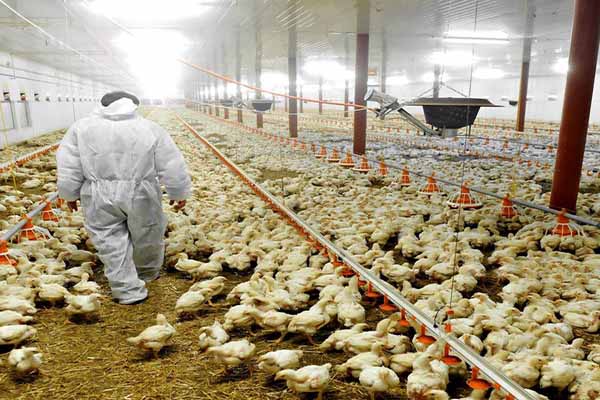Successful Cases of Automated Equipment for Chicken Farms in Tanzania
Time : 2025-04-24
In recent years, the agricultural sector in Tanzania has witnessed significant growth, especially in the poultry industry. The adoption of automated equipment has played a crucial role in enhancing productivity and efficiency in chicken farms across the country. This article highlights some of the successful cases of automated equipment in chicken farming in Tanzania, offering insights into how these technologies are transforming the industry.
Introduction to Automated Equipment in Chicken Farming
Automated equipment has revolutionized the way chicken farms operate in Tanzania. These machines are designed to handle various tasks, from feeding and watering the chickens to monitoring their health and ensuring optimal conditions for growth. The use of automated systems has not only increased the productivity of chicken farms but also reduced labor costs and improved overall farm management.
Case Study 1: Tanzania Chicken Farm Ltd
Tanzania Chicken Farm Ltd, one of the leading poultry producers in the country, has successfully integrated automated equipment into its farming operations. The farm has implemented a state-of-the-art feeding system that automatically dispenses feed to the chickens at predetermined intervals. This system ensures that the chickens receive the right amount of feed, which in turn enhances their growth rate.
Moreover, the farm has installed automated waterers that provide fresh water to the chickens throughout the day. This has helped in maintaining the chickens’ hydration levels and improving their overall health. The automated systems have also reduced the need for manual labor, allowing the farm’s staff to focus on other critical tasks.
Case Study 2: Chicken Coop Technologies Tanzania
Chicken Coop Technologies Tanzania is another farm that has witnessed remarkable success with automated equipment. The farm has installed automated egg collection systems that significantly reduce the time and effort required to collect eggs. These systems automatically detect and collect eggs, ensuring that they are fresh and in good condition.
Additionally, the farm has implemented automated temperature and humidity control systems, which maintain the ideal environment for the chickens. The automated systems have helped in reducing the risk of disease outbreaks and improving the survival rate of the chickens.
Case Study 3: Little Chickens Farm
Little Chickens Farm, a small-scale poultry farm in Tanzania, has also benefited from the use of automated equipment. The farm has installed an automated brooding system that provides optimal conditions for the chicks during their early stages of growth. The system automatically controls the temperature, humidity, and ventilation, which are critical factors for the chicks’ development.
The farm has also invested in automated feeding systems that provide a balanced diet to the chickens. This has resulted in improved growth rates and healthier chickens. The use of automated equipment has enabled Little Chickens Farm to expand its operations while maintaining high-quality standards.
Benefits of Automated Equipment in Chicken Farming
The adoption of automated equipment in chicken farming in Tanzania offers several benefits:
1. Increased Productivity: Automated systems can handle tasks more efficiently than humans, leading to increased productivity.
2. Cost Reduction: By reducing labor costs and improving efficiency, automated equipment can significantly lower the operational costs of chicken farms.
3. Improved Animal Health: Automated systems ensure optimal conditions for the chickens, reducing the risk of disease outbreaks and improving their overall health.
4. Enhanced Farm Management: Automated systems provide valuable data and insights that can help farmers make informed decisions, leading to better farm management.
Challenges and Future Prospects
While the use of automated equipment in chicken farming in Tanzania has brought about significant benefits, there are also challenges to consider. The initial cost of acquiring these systems can be high, and not all farms may be able to afford them. Additionally, there is a need for skilled labor to operate and maintain the equipment.
Looking ahead, the future of automated equipment in chicken farming in Tanzania is promising. As technology advances and costs decrease, more farms are expected to adopt these systems. Furthermore, the government and international organizations are increasingly providing support to encourage the use of automated equipment in the agricultural sector.
Conclusion
The successful cases of automated equipment in chicken farming in Tanzania demonstrate how technology can transform the poultry industry. By increasing productivity, reducing costs, and improving animal health, these systems are paving the way for a more efficient and sustainable future in agriculture. As more farms embrace automated technology, the poultry industry in Tanzania is set to grow stronger and more competitive.












